The concept of the receptacle has been largely unchanged since the first National Electrical Code® (NEC®) in 1897 to the current 2014 edition of the NEC; by the time the 2017 edition comes around, it will have been 120 years. The NEC together with its Panels is a beautiful machine that at times, can be slow to change. Before the prospective 2017 edition, there was no need to modify the longstanding understanding of the receptacle. Then new technology came along. Although the written ballot results confirming the Panels’ changes won’t be official until April 2016, we wanted to give you a sneak peek of the direction the Panels went regarding receptacles at the second draft meetings in San Diego. The Panels sought to ensure that the NEC kept up with new receptacle technology, which may have a broad impact – a great example of how the process ought to work when those changes are deemed appropriate by the Panels. The NEC Panels included many IAEI members who were active participants who contributed greatly to the success of the meeting.
HOW LONG HAS THE NEC OFFICIALLY DEFINED “RECEPTACLE”?
Requirements for receptacles have been in the Code since the beginning, the 1897 edition of the NEC from the National Board of Fire Underwriters (the precursor to today’s NEC). However, at that time, there were no terms defined, including a “receptacle.” A distinct section for definitions was added in the 1923 edition and became Article 1. In 1937, Article 1 morphed to Article 100, the NEC’s current location of definitions. In 1937, the definition of “receptacle outlet” was introduced that is similar to today’s definition of a receptacle and read as follows:
Receptacle Outlet. An outlet equipped with one or more receptacles, not of the screw-shell type, or provided with one or more points of attachment within one foot or less, intended to receive attachment plug caps.
It wasn’t until the 1962 edition of the NEC that a definition for “receptacle” was added; that definition read, very closely, as it does today:
Receptacle (Convenience Outlet). A receptacle is a contact device installed at an outlet for the connection of an attachment plug and flexible cord.
So for 52 years, from 1962 edition to the 2014 edition, the definition of receptacle was essentially unchanged; and since 1937, a receptacle was intended to be used with an attachment plug. And since 1897, the concept of what we think of as a receptacle has been unchanged until the 2017 edition – 120 years later.
DEFINITION OF RECEPTACLE EXPANDED
The definition of “receptacle” was changed by Panel 18 during the Second Draft meetings as follows:
Receptacle. A contact device installed at the outlet for the connection of an attachment plug, or for the direct connection of listed and labeled electrical utilization equipment designed to mate with the corresponding contact device. A single receptacle is a single contact device with no other contact device on the same yoke. A multiple receptacle is two or more contact devices on the same yoke.
WHY THE CHANGE? INTRODUCTION TO THE NEW RECEPTACLE
Acknowledgment of new technology. The original impetus for changing the definition of receptacle was to expand the definition to acknowledge new receptacle types, specifically technology referred to as “locking support and mounting receptacles with compatible attachment fittings.” There was a brief introduction to the technology in the March/April 2015 IAEI magazine, describing how the Consumer Product Safety Commission (CPSC) injury data justified the use of the new technology. These data were also submitted as substantiation for changes to Public Input to the NEC. Although we now know that the changes will likely occur in the 2017 edition, it was unclear at the time of printing for the article last year in the March/April 2015 issue if the definition of receptacle would be changed to acknowledge the technology.
Disruptive Innovation. Some have described the new technology as “disruptive.” A disruptive technology or innovation is a concept coined by Harvard business professor, Clayton M. Christensen to mean essentially “a revolutionary innovation.” This new receptacle has the potential to disrupt the “business as usual” when it comes to the installation, replacement, and maintenance of ceiling fans, luminaires, and other applications.
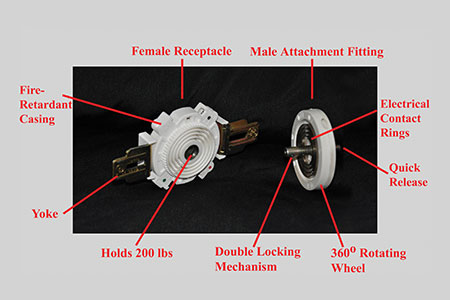
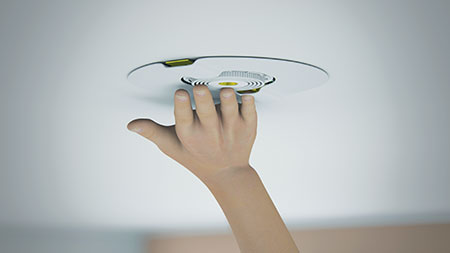
Increase in safety and speed for installation. This quick-connect and quick-disconnect method allows for safer wiring, installation and removal of luminaires and ceiling-suspended (paddle) fans and potentially other applications. Once the receptacle and face plate are in place, there are no longer exposed energized parts. The weight and bulk are in the luminaire or paddle fan, not the receptacle. Heavy or bulky parts no longer have to be supported while making wire connections to the branch circuit. Installation, connection, maintenance and replacement of the utilization equipment (the luminaire, paddle fan or other device) is inherently safer because heavy, and bulky units do not have to be maneuvered while the receptacle is being installed, where the electrician is typically on a ladder or lift. It is ideal for swift and easy installation, replacement or maintenance, such as repair or cleaning.
Technology components. Figure 1 details a typical locking support and a mounting receptacle including the compatible attachment fitting. The compatible attachment fitting is mounted on the listed luminaire in the factory. It is important for inspectors and others to be familiar with how this technology works, including what should be considered to evaluate properly, approve and use these devices. Figure 2 shows the listed locking support and mounting receptacle in the ceiling ready to accept the luminaire with attachment fitting.
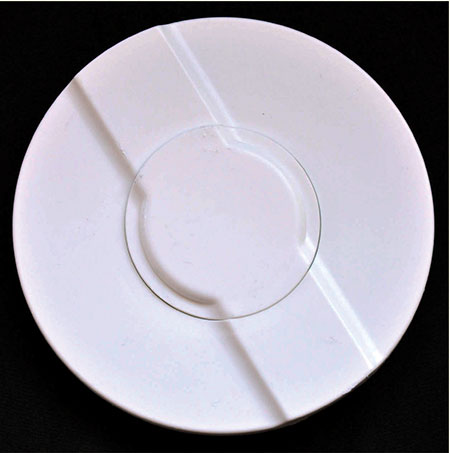
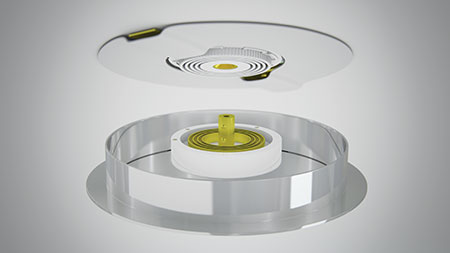
This new technology uses a listed load bearing support and mounting receptacle, and compatible attachment fitting to supply, support and connect wall-mounted or ceiling-suspended luminaires, and ceiling-suspended (paddle) fans. When the receptacle is installed in the ceiling, it is completely finger safe as shown in figure 2. New home builders can have the electricians install all the receptacles in a home, complete with the included coverplate (see figure 3); then arrange for an inspection and obtain the certificate of occupancy. At a later stage, the electricians will add the luminaires and ceiling fans or other quick-connect devices of the homeowner’s choice. The quick-connect components are shown in figures 4 and 5 and the finished quick-connected ceiling fan with a light is shown in figure 6.
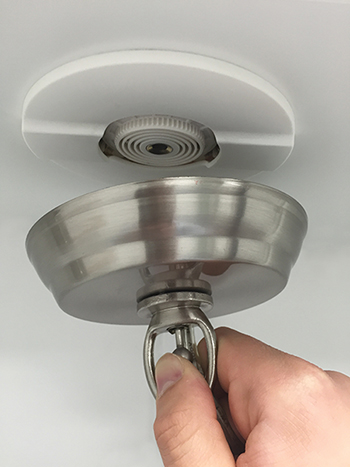
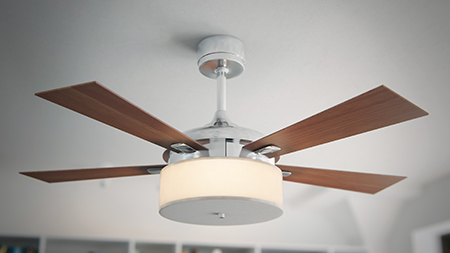
The female receptacles have a slightly different customized design based on whether it is for connection with a fan or luminaire, as shown in figure 7.

Weight handling capacity. The double locking mechanism ensures the receptacle and attachment fitting can bear the load; the double locking mechanism has been tested by the NRTL (nationally recognized testing laboratory) using 200 pounds as the test load and has been additionally tested to failure at 900 pounds. However, the load is limited by the capacity of the outlet box, which is normally 35 pounds for ceiling fans or 50 pounds for luminaires unless listed and labeled otherwise (e.g., indicated greater weight capacity).
Prospective applications beyond fans and luminaires. In the future, the locking support and mounting receptacle and attachment fitting could have widespread applications. We’re sure that many readers of this article will come up with unique applications for such types of products; we welcome the input. The quick-connect/disconnect technology can be used in many other hard-wired electrical products, beyond light fixtures and ceiling fans, even an exit sign (see figure 8).
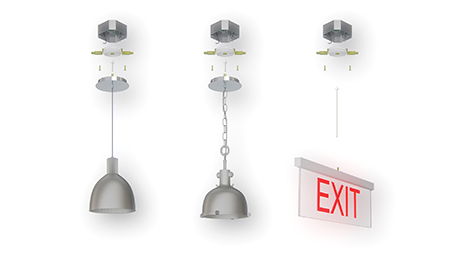
The current technology available is rated 125 volts, 15 amps. Expansion of this technology to be suitable for application on 277-volts, 20-amp circuits is being developed. The luminaires used in industrial and warehouse lighting applications could then incorporate the new technology and be easily disconnected for replacement and repair. The possibilities for applications of this quick-connect and quick-disconnect technology appear to be endless.
The expanded definition of receptacle allows for technologies other than the “locking support and mounted receptacle and compatible attachment fitting” to be developed that are compatible with this new definition. Since new technologies will be defined as receptacles, they will be governed by the same safety requirements as any other receptacle.
Attachment fitting versus attachment plug. This new definition of receptacle accounts for changes in technologies, which allows the use of attachment fittings in combination with the new receptacle type. The attachment fitting allows for connection of the power supply conductors and equipment grounding (bonding) conductor the same as an attachment plug connected into a general-use receptacle, but without the use of a cord. In addition, the combination of the receptacle and the attachment fitting also allows for the support of the device, which the attachment plug does not. As discussed by Panel 11, the panel responsible for Article 409, the attachment fitting is categorized by UL as an “attachment plug (AXUT2)”, and therefore inspectors and others referring to the UL Directory would consider it to be equivalent to an attachment plug, as it falls under the same category. We have now grown beyond the classical definition of receptacle and are no longer limited to the use of an attachment plug, which by NEC definition, requires the use of a cord. This will allow for innovative methods of connection and support to be developed, in addition to the new technology identified as “locking support and mounting receptacle in combination with compatible attachment fitting.”
DISCUSSION OF CODE CHANGES
Initial resistance to change. Although the Panel meeting vote to change the definition of receptacle was virtually unanimous (only one Panel member voted against the change during the Second Draft meeting in San Diego), this change was not without energetic discussion, particularly when first proposed. Let’s face it when a definition has been in the Code, largely unchanged for 52 years, there’s naturally going to be hesitation and possibly some resistance. Initially, there were questions about whether or not the new technology should be defined as a receptacle.
What’s in a name? There was some discussion about whether the technology should be called something else, such as a “rosette,” an undefined and unused term in the 2014 NEC. The concept of “rosettes” was first mentioned in electrical safety documents in the 19th century and continued until the 1993 edition of the NEC, yet the term was never defined. However, this new technology is light years away from the old rosette technology. Others discussed the possibility of calling the technology a “terminating device,” another undefined and incredibly vague descriptor that wouldn’t be appropriate.
The problem with giving the technology a new name was that
a) the terms “rosette” and “terminating device” are undefined and would have required the addition of a new definition; which at this late stage of the revision process would have been considered “new material” and held for the next edition;
b) there are no specific requirements for something called a “rosette” or “terminating device,” and
c) if not called a “receptacle,” the technology wouldn’t be subject to the same safety requirements as the traditional general-use receptacle; it just wouldn’t be as safe.
Receptacle safeguards now applied to new the technology. Three significant safeguards that come to mind by identifying the technology as part of the receptacle family are as follows.
First, since it is defined as a receptacle by the NEC and listed as a receptacle, the new technology requires the use of a listed dead-front faceplate that remains in place all the time, similar to the outlet cover used with general-purpose receptacles (see figure 3). Technology not defined as a receptacle, such as a generic “terminating device” would not require the use of a dead-front faceplate under the canopy, and when the canopy is removed, it could expose workers to uncovered energized wiring and circuit parts.
Second, since it is defined as a receptacle, the new technology is required to comply with Article 210 Branch Circuits; specifically §210.21(B), Receptacles. If a single receptacle is installed on a 15-amp branch circuit, it has to be rated 15 amps. However if it was defined as a “terminating device,” it would not have to meet this requirement and could be rated for substantially less ampacity. On a 20-amp branch circuit, a 15-amp receptacle is allowed as long as there is more than one 15-amp receptacle on the circuit. To allow this to happen, the 15-amp receptacle has to be capable of accepting 12 AWG conductors. Section 240.4(D) requires 12 AWG to be used on a 20-amp circuit and 14 AWG to be used for a 15-amp circuit.
Third, if it’s not defined as a receptacle, the NRTL wouldn’t require the technology to be load-break and load-make rated similar to any other load rated disconnect. Luckily (or more accurately – because of the good judgment of the Panel), all these safeguards are in place with the expansion of the definition.
OTHER RELATED CODE CHANGES (BEYOND THE DEFINITION)
In addition to a definition change, there were three sections that were also modified to acknowledge the new technology, “locking support, and mounting receptacles, and attachment fittings” (aka quick-connect and quick-disconnect).
Outlet boxes. In 314.27, the Code deals with outlet box restrictions, limitations, and requirements, where the outlet box is used for the direct or indirect support of the mounted equipment. A brand new §314.27(E) was added by Panel 9 to ensure the technology can be attached to the outlet box for hanging of ceiling fans and luminaires and possibly other devices in the future. It is expected to read as follows:
(E) Separable Attachment Fittings
Outlet boxes required in 314.27 shall be permitted to support listed locking support and mounting receptacles used in combination with compatible attachment fittings. This combination shall be identified for the support of equipment within the weight and mounting orientation limits of the listing. Where the supporting receptacle is installed within a box, it shall be included in the fill calculation covered in 314.16(B)(4).
Fan support. Section 422.18 provides the requirements for the support of ceiling-suspended (paddle) fans. This requirement was expanded by Panel 17 to allow the use of the new technology – “locking support and mounting support in combination with compatible attachment fitting” when used in accordance with the appropriate outlet box restrictions, limitations, and requirements defined in 314.27. This wording allows for the option beyond the direct support of the fan from listed outlet boxes or listed outlet box systems or, of course, support from the implied option of supporting the fan directly from the building structure. This new technology provides support and mounting in combination with a listed outlet box or outlet box system, which is different from the traditional receptacle. The proposed revised text is as follows:
422.18 Support of Ceiling-Suspended
(Paddle) Fans.
Ceiling-suspended (paddle) fans shall be supported independently of an outlet box or by one of the following:
(a) listed outlet box or listed outlet box system identified for the use and installed in accordance with 314.27(C)
(b) listed outlet box system, a listed locking support and mounting receptacle, and a compatible factory installed attachment fitting designed for support, identified for the use, and installed in accordance with 314.27(E).
Disconnecting means. Section 422.33 provides the requirements for which devices could serve as the disconnecting means. Changes were made to allow not just separable connectors or attachment plugs to serve as the disconnecting means with a receptacle, but now also attachment fittings can serve with the receptacle as the disconnecting means. This technology is load-break and load-make rated and it is tested by the NRTL under the receptacle standard. The proposed revised text is as follows:
422.33 Disconnection of Cord-and-Plug-Connected or Attachment Fitting-Connected Appliances.
(A) Separable Connector or an Attachment Plug (or Attachment Fitting) and Receptacle.
For cord-and-plug-(or attachment fitting) connected appliances, an accessible separable connector or an accessible plug (or attachment fitting) and receptacle combination shall be permitted to serve as the disconnecting means. The attachment fitting shall be a factory installed part of the appliance and suitable for disconnection. Where the separable connector or plug (or attachment fitting) and receptacle combination are not accessible, cord-and-plug-connected or attachment fitting-and-plug-connected appliances shall be provided with disconnecting means in accordance with 422.31.
INSPECTION OF NEW TECHNOLOGY
The inspection for the new technology is much like that performed for the current methods of installation, with two minor additions: ensuring the receptacle is listed for its intended purpose, and that the volume calculation is accounted for in accordance with 314.16.
When the new technology is encountered in the field during the inspection of a ceiling fan or luminaire, it is important to check that the receptacle is listed for the purpose. Since the receptacle is installed first, it might be encountered without the addition of the associated luminaire, fan or other appliance. While the faceplate is in place, the installation is safe, just as with any standard receptacle. When the faceplate centerpiece is installed, the face plate becomes a full cover plate as shown in figure 3.
An inspection should be performed to ensure the outlet box is listed for fan, luminaire or other appliance installation, and that the weight rating is compatible with the weight of the associated ceiling fan or luminaire. It is important to assure that that outlet box used is marked by the manufacturer as suitable for the use with a luminaire or fan and has the correct weight capacity. Also, it is important to ensure that the screws supplied with the listed outlet box are used. If the luminaire or fan is installed, it can be easily disconnected and the faceplate removed to allow for inspection.
CONCLUSION
It appears that the prospective edition of the 2017 NEC will include a new definition for receptacle that will allow for the development and use of new technologies, such as the “locking support and mounting receptacle in combination with compatible attachment fitting.” This new technology allows for the quick support, mounting, connection of power and of the equipment grounding conductor to equipment so as to easily and readily allow for installation, repair and replace in a safer manner when compared to direct-connected equipment.
The technology is now acknowledged as a “locking support and mounting receptacles with an attachment fitting” in three other sections of the NEC: §314.27(E), §422.18 and §422.33. It is important for inspectors and others to be familiar with how this technology works and what should be considered in order to properly evaluate, approve and use these devices. Increased usage of this technology is anticipated, based on availability and recognition. It is prudent for inspectors and others to become familiar with the new technology, such as that of the locking support and mounting receptacle and compatible attachment fitting combination, to stay current.
Author Affiliation: Ms. Cronin and Mr. Fontaine wrote this article while representing Safety Quick Lighting and Fans Corporation.





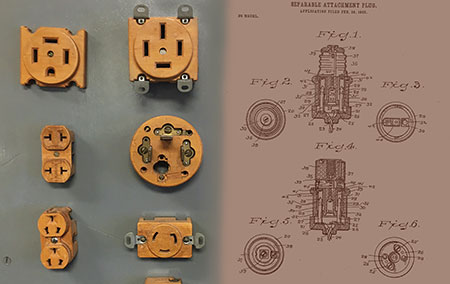






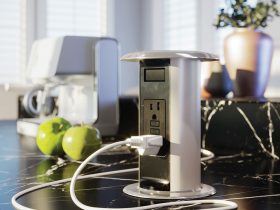


Find Us on Socials